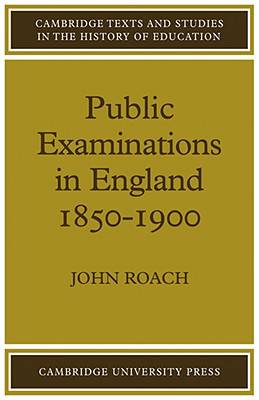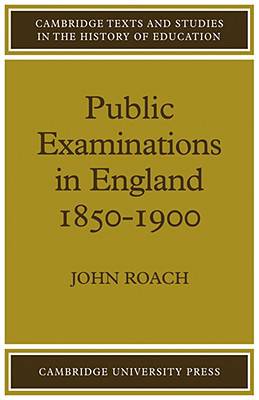
- Afhalen na 1 uur in een winkel met voorraad
- Gratis thuislevering in België vanaf € 30
- Ruim aanbod met 7 miljoen producten
- Afhalen na 1 uur in een winkel met voorraad
- Gratis thuislevering in België vanaf € 30
- Ruim aanbod met 7 miljoen producten
Zoeken
Omschrijving
A detailed historical account of the origins of the modern examination system in England from 1850 to 1900. At the beginning of the nineteenth century public examinations were almost unknown, yet by its end they were established as the most generally acceptable method of assessment and selection; with many they had become almost an article of the Victorian faith, though their objectivity and efficacy were already becoming matters of public controversy. The Oxford and Cambridge honours examinations provided a major source for Victorian ideas of open competition and public examinations. It was seen that this model could be applied to a whole range of educational and administrative purposes. The crucial developments came between 1850 and 1870: major landmarks were the Northcote-Trevelyan Report of 1853 on the Civil Service, the foundation of the Oxford and Cambridge Local Examinations of 1857 and 1858, and Gladstone's introduction in 1870 of open competition into the Home Civil Service.
Specificaties
Betrokkenen
- Auteur(s):
- Uitgeverij:
Inhoud
- Aantal bladzijden:
- 316
- Taal:
- Engels
- Reeks:
Eigenschappen
- Productcode (EAN):
- 9780521080125
- Verschijningsdatum:
- 25/08/2008
- Uitvoering:
- Paperback
- Formaat:
- Trade paperback (VS)
- Afmetingen:
- 140 mm x 216 mm
- Gewicht:
- 403 g

Alleen bij Standaard Boekhandel
+ 144 punten op je klantenkaart van Standaard Boekhandel
Beoordelingen
We publiceren alleen reviews die voldoen aan de voorwaarden voor reviews. Bekijk onze voorwaarden voor reviews.











